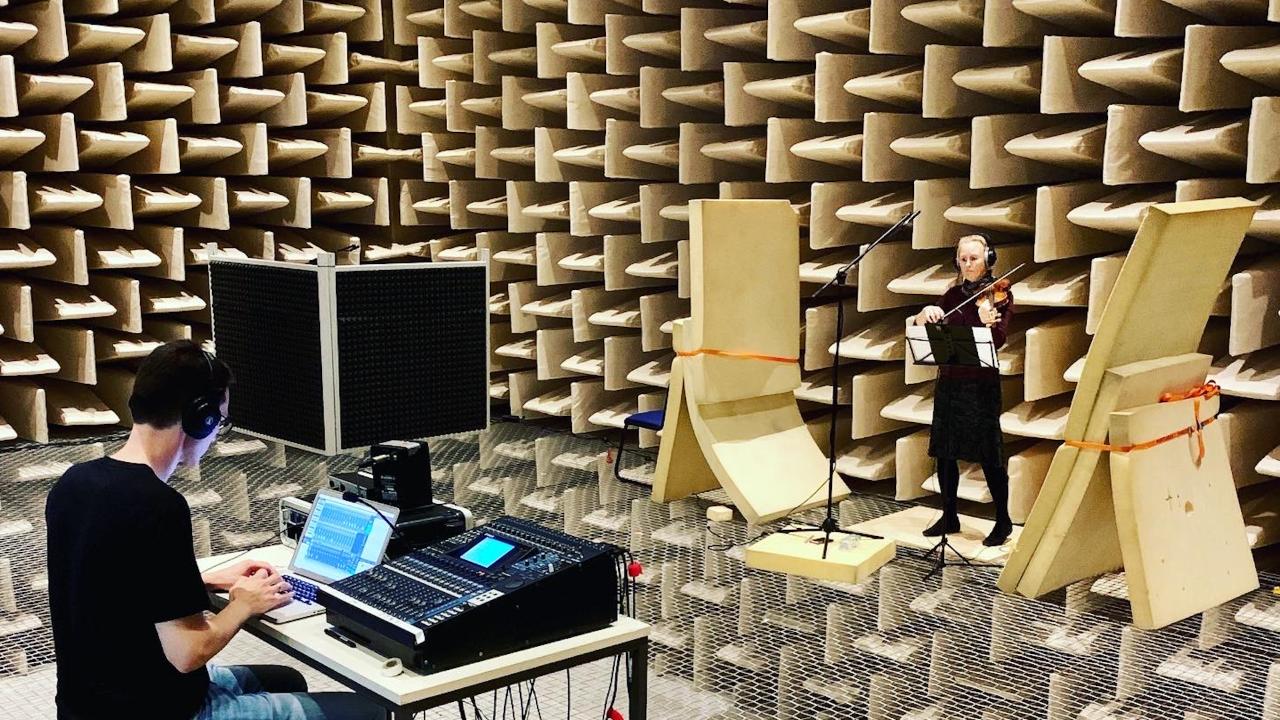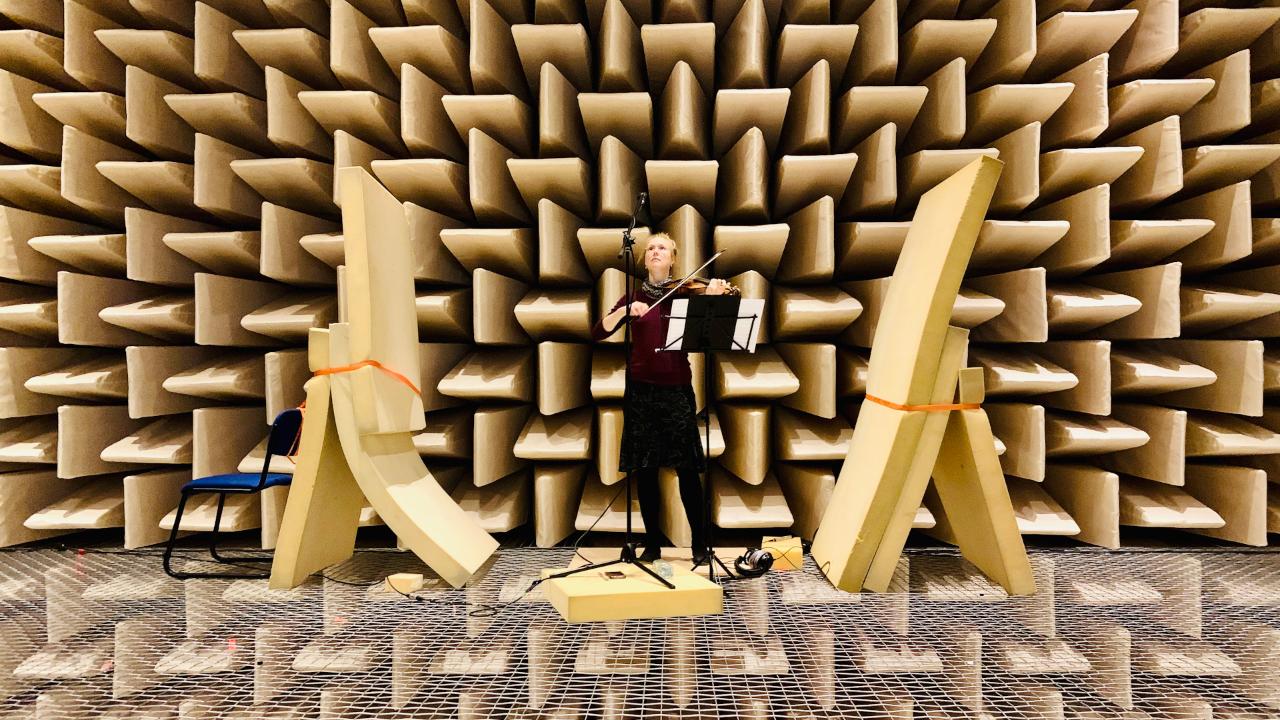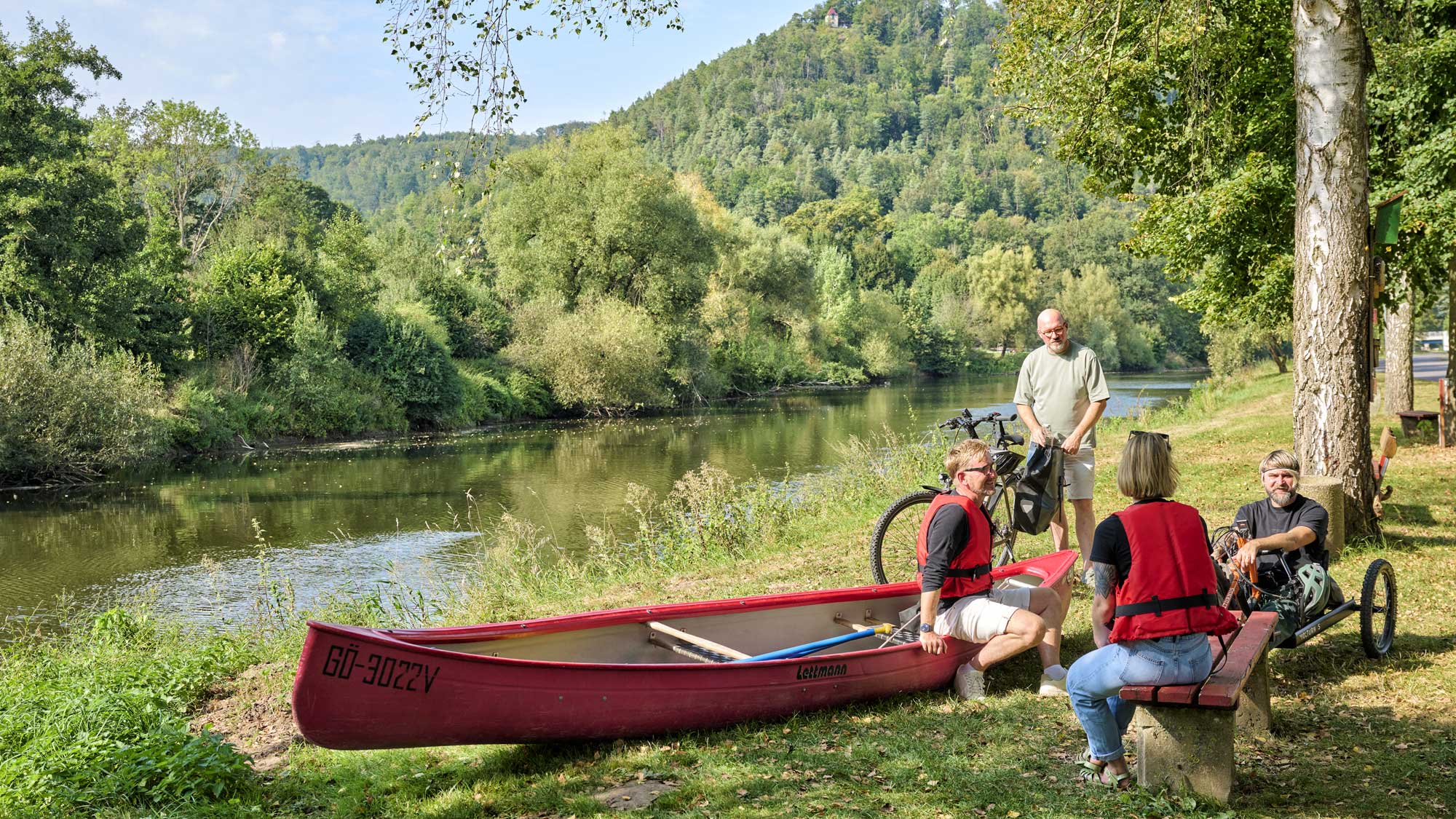You're in the right place! Whether in nature, in the middle of the city, for families, in the countryside, historic or traditional: among Thuringia's TOP hosts, everyone will find exactly the right address.
The auralisation
Heavenly sound
And how do you authentically recreate the sound of the cantata in the Himmelsburg? By first reconstructing the architecture of the historic castle chapel in a 3D computer model. Then you reproduce the sound propagation in this space and calculate the effect of the space on the sound of the musical instruments. In the process, you must define the location of the sound source, i.e. the instrument, and the location of the listener. In addition, you need to take into account the acoustic properties of the room, such as its specific geometry and the materials used on the floor, walls and ceiling.
Then, you need to offset these room acoustic transfer functions, which form the acoustic signature of a room, against the sound of the sound sources that are effective in it. For this purpose, a recording of the respective instruments and the respective piece of music is required. However, the recording itself must not yet have a spatial component, because otherwise the spatial components of the recording and those of the simulated room would overlap. The recording must therefore take place in a reverberation-free environment.
For the project, the vocal and instrumental ensemble Cantus Thuringia & Capella, under the artistic direction of Bernard Klapprott, recorded the cantata "Himmelskönig, sei willkommen" (BWV 182) at the TU Berlin.

Cantus Thuringia bei der Aufnahme in Berlin ©Christoph Drescher
Together with the visual representation presented via stereoscopic VR glasses, listeners can now experience a performance of the Bach cantata in the virtual “Castle in the Sky” via headphones from different places in the room. The room acoustics are calculated for the conditions of a fully occupied room. The simulation takes into account the natural sound radiation of all instruments and singers into the room as well as the characteristics of the human ear and the head movements of the listeners, which the stereoscopic image of the VR glasses and the signals of the headphones following a physically correct way.
What does auralisation mean?
This dynamic binaural synthesis presented via headphones offers the only procedure at the current state of the art for simulating an acoustic event that is not recognisable as a simulation even in direct comparison with the original. It enables visitors to the virtual Himmelsburg to experience a concert in the unique acoustic situation of the historic chapel as it might have sounded in Bach's time. (1)

Cantus Thuringia bei der Aufnahme in Berlin ©Christoph Drescher
Virtual Reality Experience
Quelle:
(1) According to Prof. Dr. Stefan Weinzierl, head of audio communikations at the Technical University Berlin.
Did you like this story?
Maybe, you'll like this too ...












